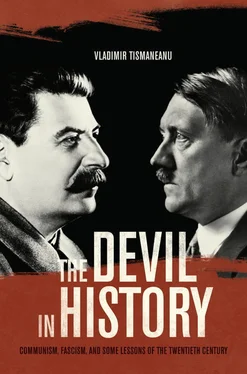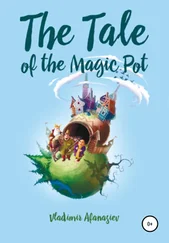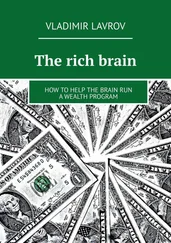STALINISM AS A POLITICAL MYTH
The Short Course of History of the CPSU , published in 1938, represented the paradigm of Bolshevik intellectual debasement: “It not only established a whole pattern of Bolshevik mythology linked to the cult of Lenin and Stalin, but prescribed a detailed ritual and liturgy…. The Short Course was not merely a work of falsified history but a powerful social institution—one of the party’s most important instruments of mind control, a device for the destruction both of critical thought and of society’s recollections of its own past.” 21Turned into a gospel for the international Communist movement, this parody of Marxism was extolled as the pinnacle of human wisdom. Stalinist ideology brought to fruition the pauperization of Marxist theoretical practice and actually functioned as an effective counterdoctrine to emasculate the originally emancipatory momentum of negative dialectics and to substitute for it an opportunist-positivistic sociology deliberately situated beyond traditional moral borders. Through the Short Course , Leninism became a “true book religion” (in the words of Riegel). This “Stalinist revolution of belief” provided unitary guidance and unity of will among the cadres involved in building socialism in one country, in the Soviet modernization project. It was the literary reflection of the “monopoly of the legitimate use of hierocratic coercion” (as Max Weber put it) exercised by Stalin in the show trials. To paraphrase Souvarine, the Short Course paradigm officially transformed Leninism into a religion d’état . 22The human being that Stalinism envisaged was supposed to repudiate the classical distinctions between good and evil , scornfully discredited as obsolete through exposure to another moral code, in many points suggestive of the Nazi Übermensch. Its ideology was rooted in hatred and resentment and developed into a logic of manipulation, domination , and survival. The main task of propaganda was to purify the mind; it was like an exorcising ritual through which the regime attempted to eliminate all the vestiges of Western culture and to create the human instrument of perfect social reproduction. Its content consisted in a few mechanically reiterated themes; its method was symbolic aggression, ideological violence. In 1929, Stalin had proclaimed the “year of the great break” (god velikogo pereloma) , which, according to Bernice Glatzer Rosenthal, connoted “the Marxist leap from ‘necessity’ to ‘freedom’… a complete rupture with the accursed old world…. Under Stalin’s leadership, the masses were building an earthly paradise.” 23What was really happening at the time was an annihilation of free will, total intoxication, moral dereliction, and thereby absolute identification with the system. It was the Soviet version of an individual Gleichschaltung.
Stalinism’s modus operandi was excess in matters such as bureaucratization, police terror, absence of democracy, and censorship: “Not, for example, merely coercive peasant policies, but a virtual civil war against the peasantry; not merely police repression, or even civil war–style terror, but a holocaust by terror that victimized tens of millions of people for twenty-five years; not merely a Thermidorean revival of nationalist tradition, but an almost fascist-like chauvinism; not merely a leader cult, but deification of a despot.” 24After the Soviet occupation of Eastern Europe, the same form of Leninism—ihey never dared call it Stalinism—was decreed the unique interpretation of Marxism. Stalin’s death was “a necessary prerequisite of post-Stalin change and, indeed, as the essential first act of ‘de-Stalinization.’” 25After Nikita Khrushchev’s fulminating attack on Stalinism at the Twentieth Congress of the CPSU in February 1956, certain changes became inevitable within the rigid structure of Soviet dogma. In addition to institutional innovations, de-Stalinization meant dedogmatization, the end of the boundless worship of sacred texts written by or attributed to Stalin. As one author remarked, with de-Stalinization, “the relations between the party-state and society underwent significant changes, with a new emphasis on mediation through soft controls, inducements and strategies of incorporation. But the monolithic structure of the party-state rule and of economic management remained fundamentally unchanged.” 26
The post-1953 political relaxation, often referred to as the “Thaw,” ushered in an era of doubt and criticism. Gone were the times of absolute certainties dictated by a presumably infallible supreme leader. Totalitarian imagery that had functioned for decades through “tremendum et fascinosum (the alternation of fear and hope, terror and salvation)” 27found its spell radically questioned. In spite of its limitations, Khrushchev’s Secret Speech, one of the most important political documents of the twentieth century, revealed, to a limited extent, the crimes against the party. But its significance lay in the fact that it “stretched the limits of unbelief in postwar Soviet Russia.” 28Most importantly, the first wave of de-Stalinization put an end to terror as an instrument of governance: “The reforms to criminal justice, especially the amnesties, and the debunking of the Stalin cult in the Secret Speech stand as lasting achievements of the period, for they ensured that full re-Stalinization—of the Gulag, and of the Stalin cult—would never again be possible.” 29As early as March 1953, K. P. Gorshenin, the minister of justice, argued in Pravda that the amnesty decree, which released a total of 1,201,738 people, was evidence of “Soviet humanity.” He advocated for “socialist legality” as the correct way to ensure the country’s “transition from socialism to communism.” 30
However, de-Stalinization advanced reforms that “threw up more questions than they answered.” 31In the realm of culture and public life, de-Stalinization generated a panoply of initiatives aimed at moving away from the petrified doctrine toward the origins of Marxism as a philosophy, toward the so-called young Marx as the archetype of a pure, non-adulterated socialist impetus. In the Soviet Union, but also Eastern Europe, “de-Stalinization did not mean the end of the communist ideal. To the contrary, it meant a rejuvenation of the idealism and the intellectual identity of the pre-Stalin period.” Or, in the words of acclaimed Soviet poetess Bella Akhmadulina, “The Revolution isn’t dead; the Revolution is sick, and we must help it.” 32Consequently, the political emancipation (de-Bolshevization) of Soviet and East European intellectuals coincided with—and was catalyzed by—the wave of liberalization touched off by Nikita Khrushchev’s historical revelations. 33While the campaigns that followed the Soviet leader’s Secret Speech “set out to emancipate the popular consciousness from the Stalin cult, it also inadvertently risked the ‘de-Sovietization’ of public opinion, as swathes of the Soviet population reacted in violent, unpredictable and ‘anti-Soviet’ ways to de-Stalinization.” 34All the Stalinist theoretical and political constructions had been denounced as a horrible hoax: the illusions could no longer cover the squalid reality. The dogmas had proved their total inanity. Yearning for moral reform of Communism was the basic motivation for the neo-Marxist revival in the Soviet Union and Eastern Europe. Indeed, “it was a Marxism that led back to a European tradition of social-democratic reformism.” 35The intellectuals’ rebellion against totalitarian controls threatened the endurance of Soviet-type regimes. The terrortainted legitimacy of Sovietism was questioned by critics who could not be accused of belonging to the defeated social classes. With their outspoken advocacy of humanism and democracy, they contributed to eroding the apparently monolithic consensus.
Читать дальше












